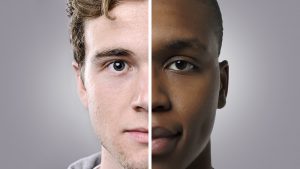
Hemifacial Spasm – causes, side effects and treatments at NaturalPedia.com
Thursday, April 12, 2018 by Zoey Sky
http://www.naturalpedia.com/hemifacial-spasm-causes-side-effects-and-treatments-at-naturalpedia-com.html

Hemifacial spasm (HFS) is an uncommon neuromuscular disease. When a patient has HFS, the muscles contract in tics or twitches on one side of their face, usually on the left. Individuals can’t control these spasms, which may even occur even when they’re asleep.
HFS isn’t usually painful and it’s not categorized as a health hazard. However, the eyes of some patients with advanced cases of HFS may remain squeezed shut for some time, which can be dangerous when they’re driving or handling heavy machinery.
While men and women can develop HFS, women, particularly middle-aged and older women, develop HFS at least twice the rate of men. These facial twitches are more common among Asian people.
Because HFS is a rare condition, only 11 out of 100,000 people develop it. The condition is caused by irritation to the seventh cranial nerve, also called the facial nerve.
The facial nerve controls the muscles of the face. Additionally, it sends information about the sense of taste from the tongue and sensations in the ear.
This irritation is often caused by a small artery that is pressing on the facial nerve closest to the brain stem. Irritation could also be caused by a benign tumor/lesion pressing on the nerve, abnormal clusters of blood vessels at birth, or a nerve injury.

Known symptoms of hemifacial spasm
The side effects of hemifacial spasm usually include:
- Ear pain – Patients may experience a “clicking” in the ear. Changes in hearing may also be a side effect of HFS.
- Hearing loss – In a study, at least 13 percent of the participants reported hearing loss. But the loss of hearing didn’t clearly relate to how serious their HFS symptoms were.
- Spasms on either side of the face – In time, all the muscles on one side of a patient’s face may be pulled into a permanent frown. Some people can also develop spasms on both sides of the face.
- Twitching in the muscles of the left eyelid – This twitching is usually the first sign of HFS, and they can be strong enough to pull the eye closed and make the patient teary-eyed.
- Twitching in the muscles of the mouth – When left untreated, HFS can become more serious, affecting the majority of the facial muscles. The twitching will eventually reach the muscles of the mouth, which will be pulled to one side of the face.
The side effects of HFS often manifest when patients are between 40 to 50 years old.
Body systems harmed by hemifacial spasm
Hemifacial spasm may cause unrecognized cornea injury. While this rarely occurs, cornea injuries may cause permanent eye injury.
Food items or nutrients that may prevent hemifacial spasm
The following foods or nutrients can help prevent hemifacial spasm:
- Food rich in calcium, magnesium, and potassium – Foods rich in these minerals can help reduce facial spasms.
- Foods with vitamin B complex – Vitamin B complex can calm the nervous system. Sources include bananas, cereals and grains, eggs, green leafy vegetables (e.g. spinach), liver, oats, and potatoes.
- Herbs – Herbs like chamomile, passion flower, or St. John’s Wort are can help address nerve-related health issues. Tea prepared from these three herbs can soothe strained nerves. Tea made from these herbs can also manage and minimize facial twitching.
Take note that you must limit your intake of or avoid consuming too much of caffeinated products like coffee, chocolate, or tea.
Treatments, management plans for hemifacial spasm
There are two main treatments for hemifacial spasm: Injections and surgery.
- Injections – Botulinum toxin (Botox) shots can be used to paralyze the facial muscles of patients to stop the twitching. While these treatments are helpful for 85 to 95 percent of individuals with HFS, their effects are temporary. After three to six months, patients will need follow-up treatment on a regular basis.
- Surgery – While surgery is more invasive, it is a more permanent option that provides immediate relief. In a procedure called microvascular decompression, a surgeon will move the irritating artery away from the facial nerve. They will then place a pad on the nerve to prevent future compression. This procedure has an 85 percent success rate, and it is very helpful for young patients and those still in the early stages of HFS. Even though microvascular decompression does have some risk, a study determined that patients only have a 1.5 to eight percent risk of hearing impairment due to this procedure.
Treatment with medication alone is ineffective for HFS.
Where to learn more
- Are you getting enough vitamin D? If you don’t take magnesium, you may not be absorbing your “D”
- Do you have optimum health? Nutritionist shares information about essential minerals and how to know if you’re deficient
- Health.news
- NaturalCures.news
- Naturopathy.news
Summary
Hemifacial spasm (HFS) is an uncommon neuromuscular disease. When a patient has HFS, the muscles contract in tics or twitches on one side of their face, usually on the left.
Hemifacial spasm may cause unrecognized cornea injury. While this rarely occurs, cornea injuries may cause permanent eye injury.
Botox injection and surgery are the two main treatments for HFS.
Sources include
Tagged Under: Tags: hemifacial spasm





